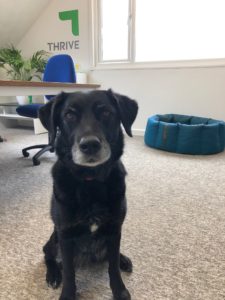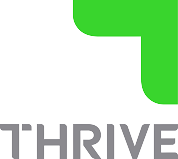I’m a business owner as well as an accountant
As our tenth birthday at Thrive gets closer, I’ve found myself reflecting recently. I sometimes find it hard to believe I’ve been a business owner for almost a decade. Although I’m not going to lie, I definitely feel it! But there’s one person who has experienced it all with me – the highs, the lows, and all the chaos in between, and that’s my wife Sam. As my wife, best friend, mum to our two kids and a business owner herself, she fully gets me and is incredibly supportive of the journey I am on with Thrive. We’re definitely in this together!
But I’ve realised as a professional running a business, it can be difficult to separate James the advisor from James the business owner. Though it’s this multifunctional role that puts me in a unique position to work with your business. However, it goes further, I’m a partner and a parent too, and we’re on much more similar journeys than you think.
So, with the help of my wife, in this blog, I share with you a look into Thrive the business, my life as a business owner, but also as a husband and a dad. And I’ll share with you the plan I have in place to take £140,900 of value out of the business for myself and the family next year and over the next 10 years, up to £1.272m – and all TAX EFFICIENTLY whilst also planting one million trees. #GOALS
Over to you Sam…be gentle!
Sam: Before we start, did you put the bins out? Only joking. Okay, so let’s start with James the business owner, husband and dad. Tell everyone a bit about you…..
JAMES: I’m obviously married to my beautiful wife Sam. I’m also dad to Josh and Genevieve who are 5 and 2, and definitely keep us on our toes and of course Lyra our furrrst-born; like running two businesses isn’t hard enough work! Are we a bit mad? Even if we are I wouldn’t change anything. I’d say we’re in a good, comfortable place in life now.
We’re looking very much towards building for our future, thinking about growing our provisions for when we retire, and I’d also like to start to extract more from the business to invest in other places. We’ve started looking into pension contributions by mapping out what type of lifestyle we’ll want to maintain. I think we’ve agreed on a number that will work for us, so now we can see what we need to achieve.
And then with the business, it’s great to have reached that established place where we’re now planning for the next phase of controlled sustainable growth.
Sam: Yes that sounds about right to me. So, every business owner has a story of how, why they started up on their own, what’s your story?
JAMES: You’ll remember I’d come to a bit of a career junction hadn’t I? I could either carry

on working with listed businesses, with no influence over the decisions being made because of all the corporate b*llsh*t, or work for an entrepreneur but that was exhausting and I was tired of being the only grownup, carrying all the stress. Then after months of walking Lyra in Richmond Park it dawned on me that maybe being an entrepreneur myself was possible. Up until this point I’d been so focused on building a CV to go up a career ladder that prior to that it just didn’t occur to me to run a business.
But then Xero came along – I’d been using it for your business – and the opportunity just slapped me around the face. Knowing how awful the accounting practices were in the UK, I thought hang on a minute, by using Xero, and my FD experience, we can make a big business finance function accessible to small businesses. There was absolutely nothing holding me back. I was out of work at the time, just throwing interviews because I didn’t want the jobs. It only occurred to me after an interview with a group CFO, that I’d sat there and literally told him “I don’t want a job”. I’ve not looked back since.
fBut in all honesty, the thing that really sealed it for me was talking to you about having a family, and how having balance was central for us. With us both being business owners, we’d have the flexibility to both be parents rather than one be a parent and one be an earner.
Then, I think it was the June of that first year I realized hey I have a business here!
Sam: That feels like such a long time ago now, so much has happened, and your business has changed so much. How would you describe that journey, and your business today?
JAMES: Well, I remember we’d gone through the first year of having Josh and I’d been so involved which was wonderful. I think I signed about five clients in that month of April and I was like, “Okay, we’re off to the races here” that’s when we made our first hire.
By January 2019 and Genevieve was due, it was a much bigger business. I remember being able to just hand it to the team to run for a few weeks, and coming back and thinking oh, it turns out I’ve got a company here. I’ve got an actual business. It’s not just me doing work, owning my own job. This was a big stand-out moment for me.
Then June last year, we were three months into a global pandemic, and we’d actually grown 20% in that quarter. I put this down to having confidence in what we do. I knew the value of what we were offering. We were pitching to clients with complete confidence, and they were agreeing. We were signing good clients for great fees.
Don’t get me wrong, it’s been gruelling at times, and you know it’s taken hard work grit and determination to get the business to where it is today. But I’m supported by you, and a great team which is 5 people strong now. We’re currently sat at just over 70 clients, specialising in working with sole founder, tech businesses, of up to around 20 people, that are funded or bootstrapped with usually around a £1.5M turnover or cost base.
But a big area for me that I have invested time into, is building a business with a purpose, and working with clients who are driven by a bigger purpose. As members of B1G1 Business for Good, every interaction our clients have with us contributes to a greater purpose, from booking a meeting to being a part of our yearly donations. Being able to give something back has been a massively rewarding aspect of building a business of my own and that’s now led to the huge decision to sign up to the Million Tree Pledge
Sam: It’s quite eye-opening when you look back and take stock of what you’ve done, and with two kids chucked in the mix. So, what does the future look like for Thrive?
JAMES: I’m gearing us up for the next phase of growth. But I don’t just want to do this through winning new clients. I’ve set us a goal of 1 or 2 new clients a month, and this will be comfortable for us. Not only that, but I also know this is what we need to keep us on track with our targets, and we’ve got the resource to support that number.
Separately I want to knuckle down and focus on our existing clients. I want us to build deeper relationships with them, delivering a fully outsourced finance function, more tax advice and more business advice.
A bit like me and Thrive, lots of our clients have moved through the evolutionary cycle of being a start-up, to becoming established and they’re ready to grow again. This means we need a higher level of service. We need different services; more tax advice and consultancy-based services. I say “we” because Thrive needs these services too.
Sam: That’s pretty cool that you are directly experiencing the same needs as your clients. What types of services are you using that would be relevant for clients then?
JAMES: Definitely, it’s such an insightful position to be in. When I say we are on this journey with them, we’re 100% on this journey with them.
So, an example of one of the services is a Tax Diagnostic Review. You know about this one because you did it with me! We recently completed the Growing Business Tax Diagnostic on us both – well our whole family really – and Thrive. This basically identified to us, all the tax advice, tax-saving opportunities, allowances, incentives, reliefs, everything applicable to us and the business.
From this I/we now have a plan that means we will be able to take £140k of value out of the business over the next year – tax efficiently more importantly – and over the next 10 years, it’s looking like it’ll be £1.3m.
The plan isn’t overly complex. It covers three areas; how I can reduce tax in the business now to improve the overall value, what I can put through the business or take out to improve our lives as a family, and what I want to do to improve the working culture for the team.
We are 100% clear on what we can do right now, but also what we can work towards as the next target step in our future.
Sam: It sounds logical when you break it down like that. I’m sure loads of business owners will want to know what’s on your plan…so what are you focusing on next to reduce tax in the business and build the value up?
JAMES: With a real emphasis on growth, I am investing more into the business now. We’ve been focusing on our systems and ensuring they’re sh*t hot. We want our systems to serve us and our clients. I am introducing new systems all the time, to improve our efficiency and support us to deliver these new higher-level services. All this investment contributes to the overall value of the business, I am talking about things like pricing software, tax consultancy software, as well as new equipment for the team.
And with the new team equipment brings a tax benefit. As I am looking at new computer equipment – we’ll be able to claim the Capital Allowances Super Deduction. Using Capital Allowances tax relief, we can offset the cost of the investment into the equipment against taxable profits up to a maximum of £1m. But then with the recent Super Deduction, a limited company can now claim 130% for that investment (if it is a new purchase) and there is no cap on the investment that qualifies.
It’s a fairly recent change following the 2021 Budget but it’s a decent one that gives that cash boost back into the business for new equipment I was looking into anyway.
Sam: As you said before, I did the tax diagnostic review with you and I have an idea of some of the things that will affect us, but using your words, what will you be putting through the business or alternatively be taking out, that will improve our life as a family?
JAMES: There are so many things you can do here, 32 different things in fact! And it’s so important to have an understanding of what you can tax efficiently extract from the business, as it all connects to how you need the business performance to perform for you.
So, here’s what we are focusing on…
Salary and dividends splits are significant for us. I take a 50K salary, which means I am taking a hit on the NI. But this deals with our household expenses, and we don’t draw much above that, other than squirrelling some away.
And with you having your own business which you’re just building up again, we agreed the plan for us is to both hit the 50K level. Together we’ll aim to take roughly the £100K tax-efficiently each year between us. This income splitting allows us to access a lower tax bracket and both use the personal allowance. This will be an ongoing thing for us, continuously hitting the higher rate band but not going into it, whether it’s fully salaried or not.
The only side point here is that we’re currently waiting on B Corp verification which means we’ve pledged 20% plus of profits (or 1% revenue, whichever is higher) to worthy causes. So, this makes dividends potentially quite expensive, although the tree planting will likely meet that commitment.
Next, it’s cars…we’ve been talking about leasing an electric car haven’t we, but this probably won’t be for a year or two. It’s all about Tesla at the moment and I’m hoping there’ll be some more competition by that point, and we can get something new.
Although we’ve said not this year, when it comes around the tax benefits on electric company cars are nifty. Yes, the tax on company cars has increased but not for electric cars. There are other side benefits too like tax-free charging at the workplace, tax-free accessories and zero to pay in road taxes, Electric cars get taxed at 1% currently, rising to 2% by the time we lease. Not that I’m trying to sweet talk you with tax, to try to get a new car or anything!
Moving onto Pensions. Ideally for at least the next ten years, I’d love us to be hitting the full £40K allowance for both of us, and just really pump the engines. We’ve looked at where we want to be when we retire and it’s time we ramp it up. It’s just smart. With tax relief on the first 25%, the carry forward rules and protection from tax until passing makes it a bit of a no-brainer to place profits, so here they can continue to be invested and grow for our future. And by paying money from the company to myself that’s tax-free, I get a corporation tax deduction for that contribution. It’ll make up the ground lost versus continuing a corporate career.
They’re your big hitters so to speak. In addition, we’re looking at taking the available tax-free loans out of the business to invest in stocks and shares. I have a couple of little pots in the business in my Starling account – putting a chunk aside a month, half of it’s labelled for the Lapland, and the other half of it’s labelled for Disney! Literally more excited than the kids will be!
Then when it comes to life insurance, we’re doing a bit of both. We’ve got one relevant life policy at a fixed level that we put through the business and we’ve got a personal life insurance policy to cover the mortgage.
But this all adds up and as you can see directly impacts our lives whether its health, future security, and even family holidays.
Sam: Maybe I imagined this but I was definitely feeling a bit of “new car” pressure there. I could fancy an electric mini though. But yes it’s a bit mind-blowing. When you think tax, you don’t think to link it to specifics like a dream holiday. Crazy. Okay, so what about the team? What things can you do, or are you doing to improve the working culture for the team?
I’m exploring all kinds of employee benefits because I really want to keep hold of the great people in the team. There are all sorts, from trivial benefits to staff functions to things like the cycle to work scheme.
We’re definitely long overdue for a team do. I’m in the throes of trying to book a pub lunch for us at the moment but we’re all parents. We don’t do the evenings. It’s trying to find something that seems to be in between us all. Then throw Covid in the mix, everyone is out of touch with making plans… it’s the new pandemic. That was such a dad joke. But yeah, with staff functions, providing the cost per head is less than £150 – it’s not taxable on the employees. Winner.
Then the trivial benefits are great for everyone in the business to be honest, including you and me. We need to make better use of this one, even just a nice bottle of wine. We can purchase anything via the company up to a value of £50, with the total amount of £300 that can be spent in a year. For the team, there’s no £300 limit. When it comes to motivation, and just saying thanks, these are a great way to say thanks.
Finally, I’m interested in the cycle to work scheme….but we’re quite rural. I’d love to make this available for the team but I wouldn’t want people Being squished on their way to work! I mean personally, I’ve got big plans to cycle Bhutan in the Himalayas in 2022. I love the Himalayas. What more beautiful place is there in the world? Bhutan as a country, as a society has always fascinated me. They’ve got that classic golden benevolent dictator, monarchy. It’s such an interesting place.
I digress! But yes, I’m going to be looking to find a way to commute to work, albeit a five-minute walk away, on a bike that’s suitable for the Himalayas!
Sam: Oh no you’re going to become a MADIL….Middle-Aged Dad In Lyrca! Haha
JAMES: It’s in the plan now, sorry! Aaaaand I think we’ll end it on that bombshell….
If you want to get a better understanding of the tax position of your business, get your life number down, get a plan, we can help you get you there – it can genuinely help build you a better life.
Learn more about our tax review service here

